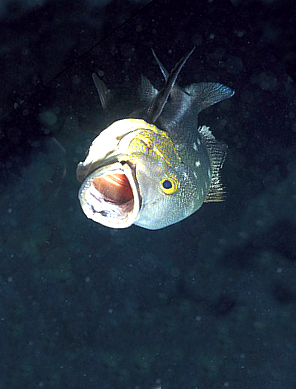Dam study paper to ease cost of hydropower
 Humans may love building dams, but they have not been so great for fish, until now.
Humans may love building dams, but they have not been so great for fish, until now.
When fish pass through hydroelectric power dams they are sent on a wild ride by the currents closer to the wall. Their rapid change in location, water pressure and orientation is often too much, and the fish are killed or seriously injured. The change in pressure is known as ‘barotrauma’.
A new report has detailed the risks hydroelectric dams pose to their inhabitants, and a number of measures for future dam design to make sure they are a useful environment for all.
The paper’s chief suggestion is to modify turbines to minimise dramatic shifts in pressure. It says this offers an important new way to keep fish safe when passing through.
In Australia, hydropower devices are planned in the area drained by the Murray-Darling river system.
The authors say the findings span four continents to improve the understanding of hydropower and benefit fish around the globe.
New results about species in the Mekong or Amazon regions, for instance, can inform fish-friendly practices in regions where ‘barotrauma’ has not been extensively studied.
The research was led by the US Department of Energy's Pacific Northwest National Laboratory. However, it included important input from a range of international authorities including experts from Australia’s Port Stephens Fisheries Institute and Narrandera Fisheries Centre in New South Wales, as well as AusAid, the Australian Agency for International Development.
Depending on its specific path, a fish travelling through a dam can experience an enormous drop in pressure equal to the change from sea level to the top of Mt. Everest in just a few seconds. As quickly as the waters swirl, the fish suddenly finds itself back at its normal pressure.
These sudden changes have a catastrophic effect on fish, most of which are equipped with an organ known as a ‘swim bladder’ to maintain buoyancy at a desired depth. When the fish goes deeper and pressures are greater, the swim bladder shrinks; when the fish rises and pressure is reduced, the organ increases in size.
For some fish, the pressure shift means the swim bladder instantly expands exponentially. This rapid inflation can result in internal injuries or even death.
Factors include the specific path of a fish, the amount of water going through a turbine, the design of the turbine, the depth of water where the fish usually lives, and the physiology of the fish itself.
“To customise a power plant that is the safest for the fish, you must understand the species of fish in that particular river, their physiology, and the depth at which they normally reside, as well as the tremendous forces that the fish can be subjected to,” said Richard Brown, a senior research scientist at PNNL and the lead author of a new paper published in the journal Fisheries.
Scientists have found that keeping minimum pressure higher in all areas near the turbine is key for preventing barotrauma. This reduces the amount of pressure change a fish is exposed to and is a crucial component for any turbine that is truly “fish friendly”.
Preventing extremely low pressures also protects a turbine from damage, reducing shutdowns and costly repairs.








 Print
Print